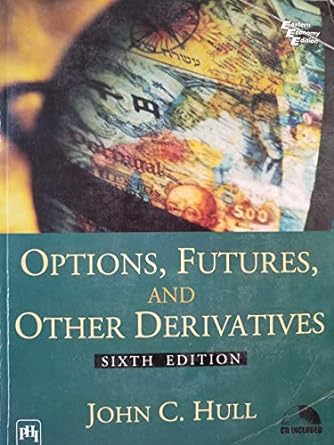At time zero the price of a non-dividend-paying stock is So. Suppose that the time interval between
Question:
At time zero the price of a non-dividend-paying stock is So. Suppose that the time interval between 0 and T is divided into two subintervals of length t and t. During the first subinterval, the risk-free interest rate and volatility are r and o, respectively. During the second subinterval, they are r and 2, respectively. Assume that the world is risk neutral.
(a) Use the results in Chapter 13 to determine the stock price distribution at time T in terms of r1, 12, 01, 02, 11, 12, and So.
(b) Suppose that is the average interest rate between time zero and T and that V is the average variance rate between times zero and T. What is the stock price distribution as a function of T in terms of F, V, T, and So?
(c) What are the results corresponding to
(a) and
(b) when there are three subintervals with different interest rates and volatilities?
(d) Show that if the risk-free rate, r, and the volatility, , are known functions of time, the stock price distribution at time T in a risk-neutral world is![]()
where is the average value of r, V is equal to the average value of o, and So is the stock price today.AppendixLO1
Step by Step Answer:







